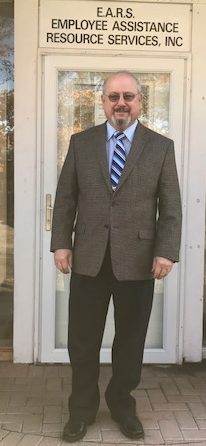Despite his office being in Suffolk County, which has the highest fatal opiate overdose rate in New York State, Dr. Simon Zysman and his outpatient clinic has achieved a high rate of success treating heroin and opioid addicted patients compared to other facilities statewide.
His secret? His clinic, Smithtown-based Employee Assistance Resources Services, Inc. (EARS), offers offers a multidisciplinary treatment approach for patients suffering with mild to moderate heroin and opioid withdrawal symptoms. Treatment services consist of outpatient services, outpatient detoxification, an intensive outpatient program, medication assisted treatment, as well as individual, group, and family therapy.
“The EARS program is unique because our interdisciplinary team consists of physicians who specialize in heroin and opioid addiction medicine, psychiatrists, psychologists, social workers, and substance abuse counselors,” says Dr. Zysman. “The EARS clinicians have a deep understanding of the dynamics of heroin and opioid addiction as well as the dynamics of the medications needed to help the opiate addict achieve recovery.
“Behavioral intervention alone with heroin and opioid addicts yield very poor outcomes with more than 80 percent of addicts relapsing,” he continues. “But when utilizing the EARS treatment approach for opiate addiction, the results are much better. The results of treatment at EARS have varied from 60 percent to 90 percent successful outcomes with the heroin and opioid addicted patients.”

Successful Heroin and Opioid
Treatment, which will be released
July 18.
Zysman is detailing his method in his new book, Successful Heroin and Opioid Addition Treatment, which is being published this month. He hopes it will inspire other treatment providers to learn from his successes and help turn the tide of the national opioid epidemic. The doctor draws on decades of experience, honing his focus on heroin and prescription painkiller abuse 10 years ago, just as the epidemic began to take hold.
Zysman notes that many inpatient detoxification programs, inpatient substance abuse rehab programs, and outpatient clinics could benefit from utilizing the EARS treatment approach to improve their treatment outcomes with their heroin and opioid addicted patients.
He said he was unaware of how successful his method was until the state Office of Alcoholism and Substance Abuse Services (OASAS) alerted him to his retention rate compared to the state average. OASAS verified the data, but said that since it was from 2015, they could not comment on it.
A typical patient is with his clinic for three to six months, depending upon the severity of their dependence. He notes that those dependent on drugs will often omit their illicit drug use when asking their doctor for help treating issues such as depression. But anti-depressants don’t work properly when mixed with opioids and other drugs.
“The EARS program also has a high rate of success with heroin and opioid addicted patients who suffer from co-occurring disorders,” the doctor says. “These are opiate addicts who have psychiatric problems and/or mild to moderate physical pain. The EARS staff sets short and long-term goals for opiate addicted patients and encourages family involvement in the treatment process.”
His patients can testify to that.
“I was using 10-20 bags of heroin per day,” says one 22-year-old man in recovery. “Before getting sober my life was miserable and unmanageable. I was a slave to drugs. My life became dangerously unmanageable in every way imaginable. Since getting sober and coming to EARS my life has improved drastically. I am living a good sober happy life.”
Successful Heroin and Opioid Addition Treatment is on sale beginning July 18.































